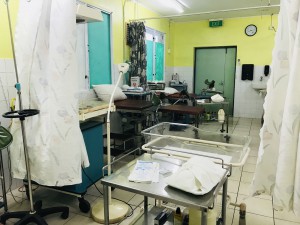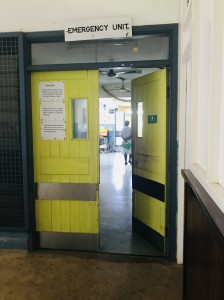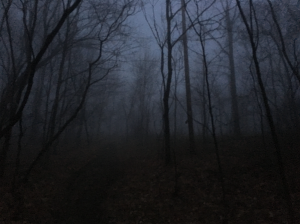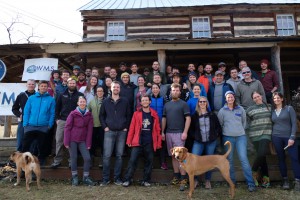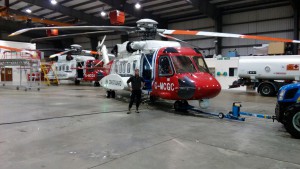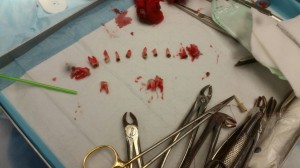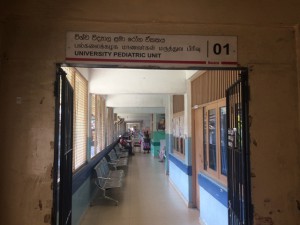Oh and Gee, are perhaps the politer words to describe what I was often thinking during my rotation in Obstetrics and Gynaecology at NDH. The staff are extremely hardworking and do their best with the resources available, but it was a far cry from services available in New Zealand. › Continue reading…
Archive for 'Blog'
Arriving on the beautiful island of Santo Espiritu in Northern Vanuatu I was ready to hit the ground running and submerge myself in my first elective placement. I could already tell by the flight over the island that I was in for an interesting month here. The buildings were mostly concrete block with tin or palm roofs and the main centre of Luganville was tiny (even by New Zealand standards). The main industries on the island seem to be farming, fishing and tourism with the former two grinding to a halt for the latter when the cruise ships arrive in port.
The pinnacle of my entire elective and possibly all of medical school for me was being the medical and transport director of a simulated mass casualty incident. This occurred on the last night of the wilderness first responder course during my wilderness medical elective. I really enjoy taking on leadership positions and this really pushed me to my limits.
The third month of my elective was probably my favourite month of the entire of medical school. I first heard about the Wilderness Medicine Societies student elective in 2016 and knew from then on that I wanted to be a part of it. I have done a few weekend wilderness medicine courses before, during 3rd and 4th year so it fantastic to learn new things and reinforce previous knowledge and skills. I made sure I was 1st quarter elective so I would be able to participate in this course and applied for it the day applications opened. › Continue reading…
For the second part of my elective, I was doing General Practice in Unst and Lerwick Health Centres in the Shetland Islands, Scotland.
For those that have no idea where the Shetland Islands are. They are 170km north of mainland Scotland. They are an archipelago of islands in the North Sea. The main industries are fishing, oil, agriculture and tourism. Medicine in Shetland is, like back home, based predominantly around general practice. There is one base hospital based in Lerwick. Gilbert Bain Hospital is a small secondary hospital with four surgical consultants and four medical consultants, a couple of anaesthetists and a handful of house officers. Along with the nurses and the allied health team, the whole hospital is run smoothly. The A and E department is run by house officers, one surgical and one medical who call in the on-call consultant based in the hospital if needed. › Continue reading…
While I was traveling on the Mobile Surgical Bus a lot of the lists performed in the North Island were paediatric dental lists. These are children that have failed to have dental work done successfully in a normal dental clinic due to the difficulty of the procedure or inability of it to be performed on an awake child. These kids would, therefore, have their dental work done under general anaesthetic. Lists normally had about seven to ten children per day depending on the amount of time needed for each procedure. These children could be anywhere from two to 15 years old, most were normally in the four years to eight years’ age group. › Continue reading…
Mobile Surgical services, what a whirlwind way to tour New Zealand and get to assist in improving rural health care throughout rural NZ. This was the way I spent the first month of my elective. After a minor hitch with booking my time on the surgical bus everything was sorted for me to meet up with the mobile surgical bus in Queenstown on the 20th of November 2017, 2 weeks after sitting my final 5th-year exams, and 1 week after finding out I actually passed them. (WoooHooo!!!) I managed to get this amazing elective set up thorough MSS’s General Manager Mark Eager and their mastermind and Clinical Director Dr. Stu Gowland. › Continue reading…
Management of cases in a Paediatric ICU is an area I have not had a lot of experience in during my clinical training so this week I chose to spend my time on this ward to further my knowledge of this specialty. It was explained to me by the consultant early on in the first ward round that the most challenging aspect of managing children on the ward is discussing end of life care due to the Sri Lankan emphasis upon the sanctity of life. › Continue reading…
The idea of a hospital being ‘at capacity’ has gained a new meaning for me since my attachment started on the Paediatrics ward at Karapitiya. This year has been particularly bad for dengue in Sri Lanka with an estimated 81, 000 dengue patients nationwide and around 250 deaths from this mosquito-borne virus.
This morning was busy in the labour room with five babies being born before midday. The layout of this area is strikingly different from the standard maternity suite in a New Zealand hospital. The room is one open space with eight curtained beds housed in two bays. Perhaps most surprising to me was that it is normal and expected that women birth alone here without any family or partner support. This included women coping with the delivery of babies with very poor, terminal prognoses such as one woman with an anencephalic foetus who was being induced at 41 weeks. › Continue reading…

